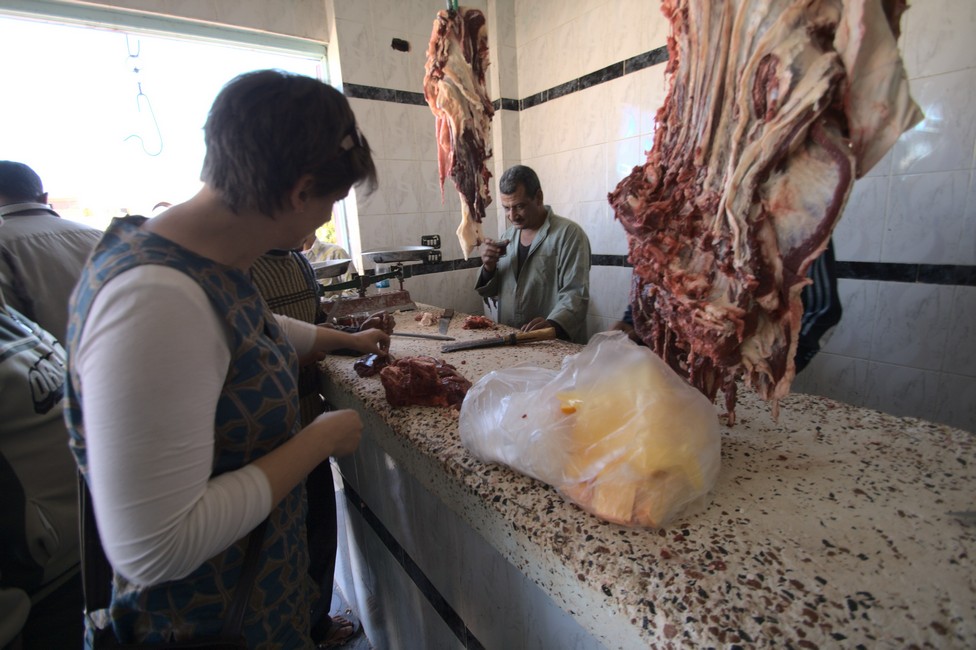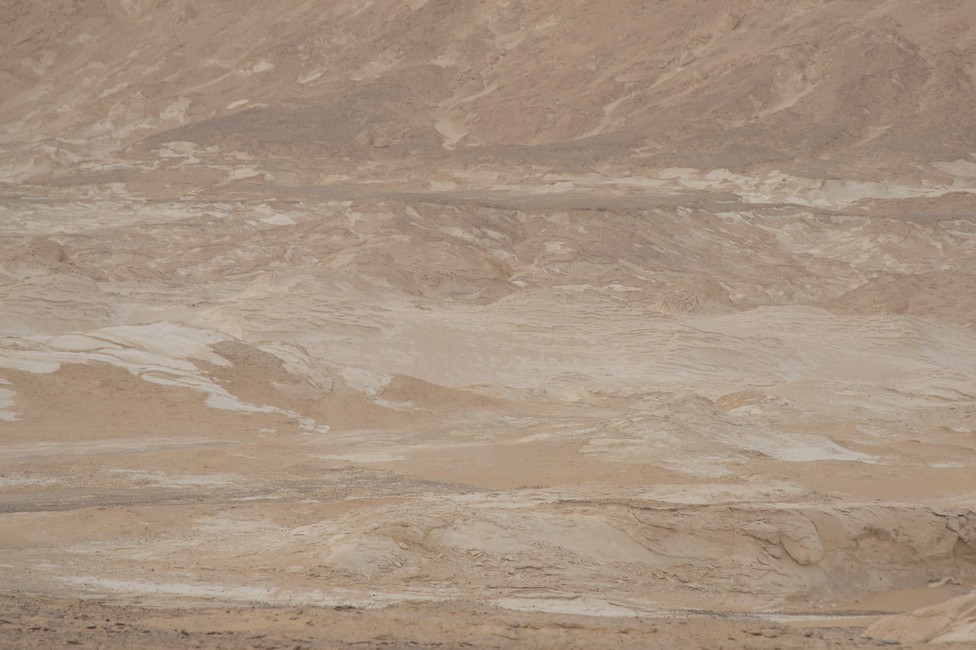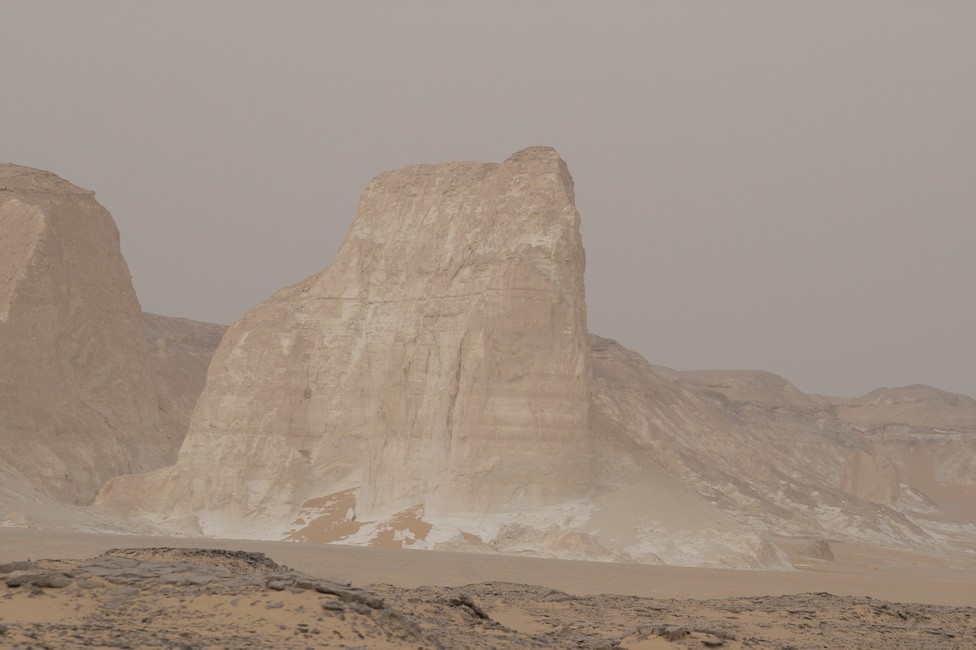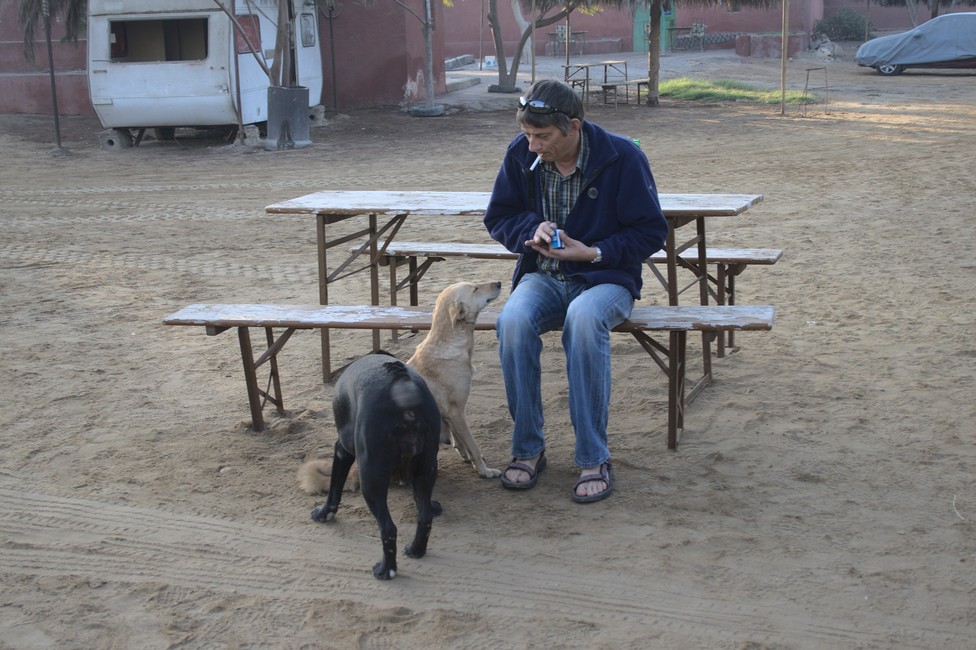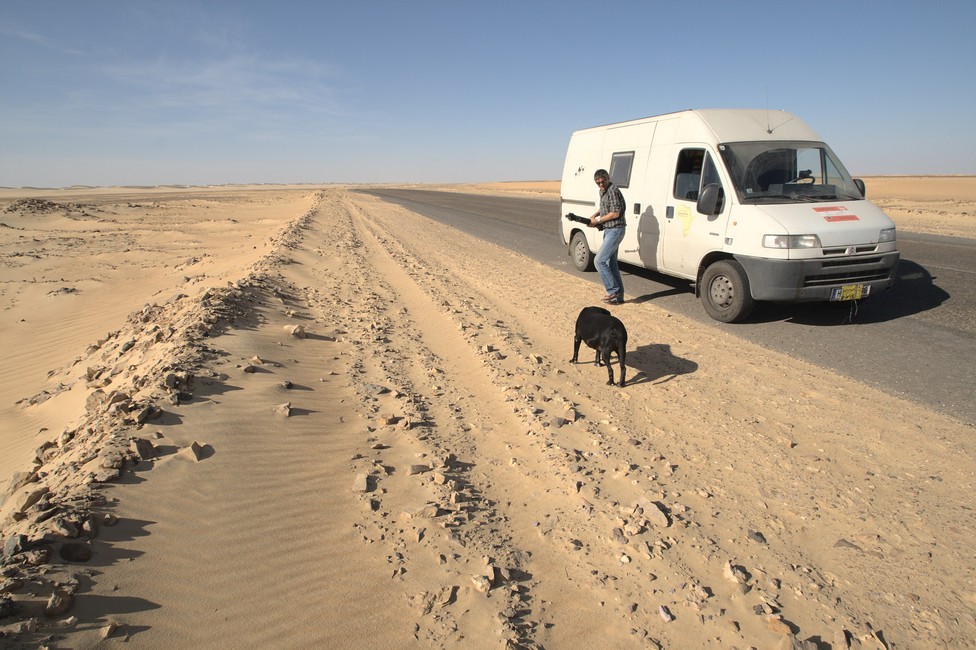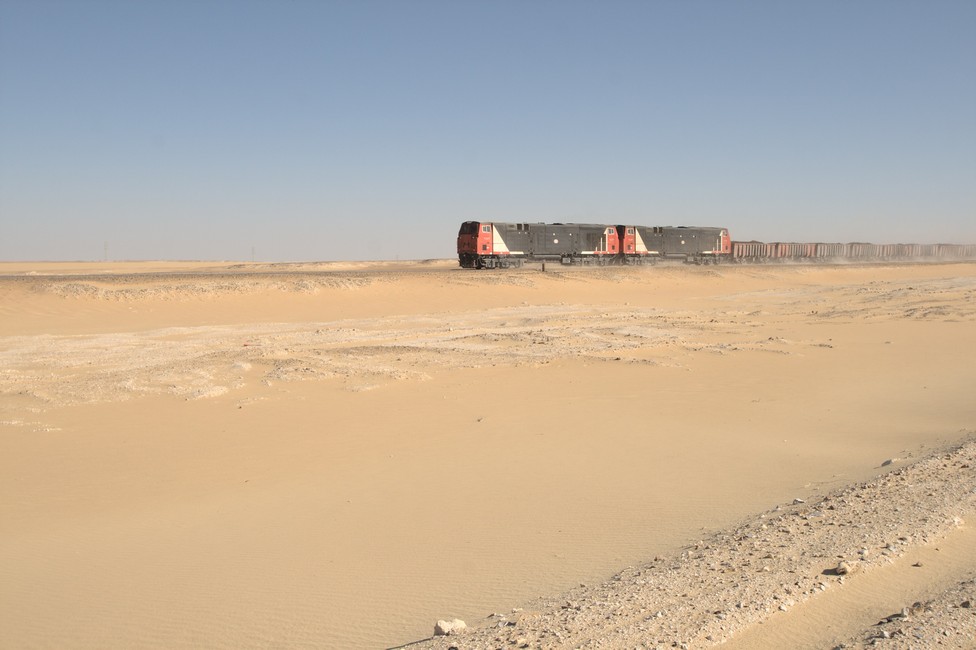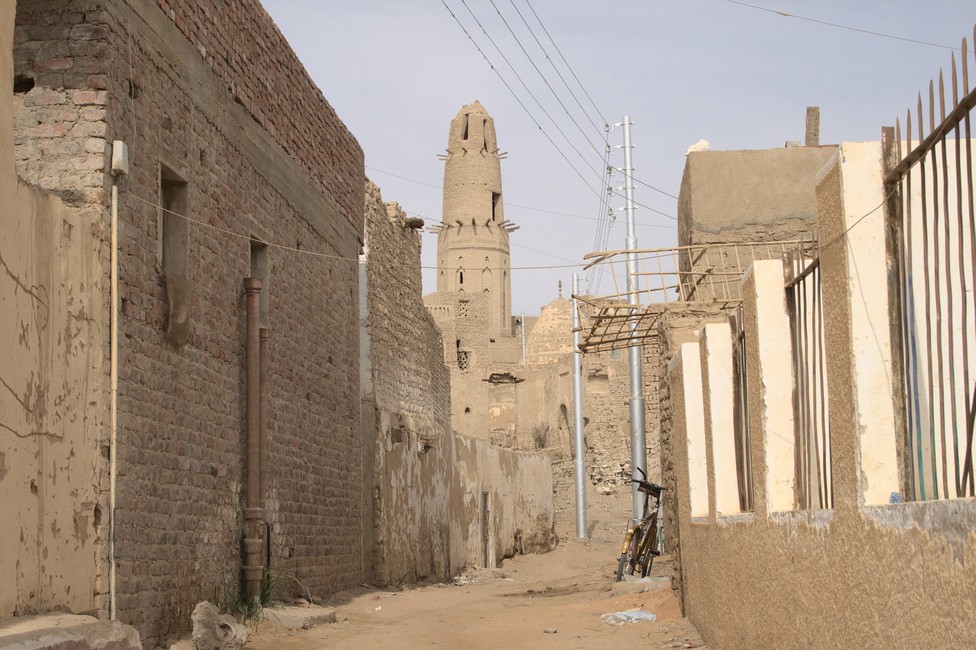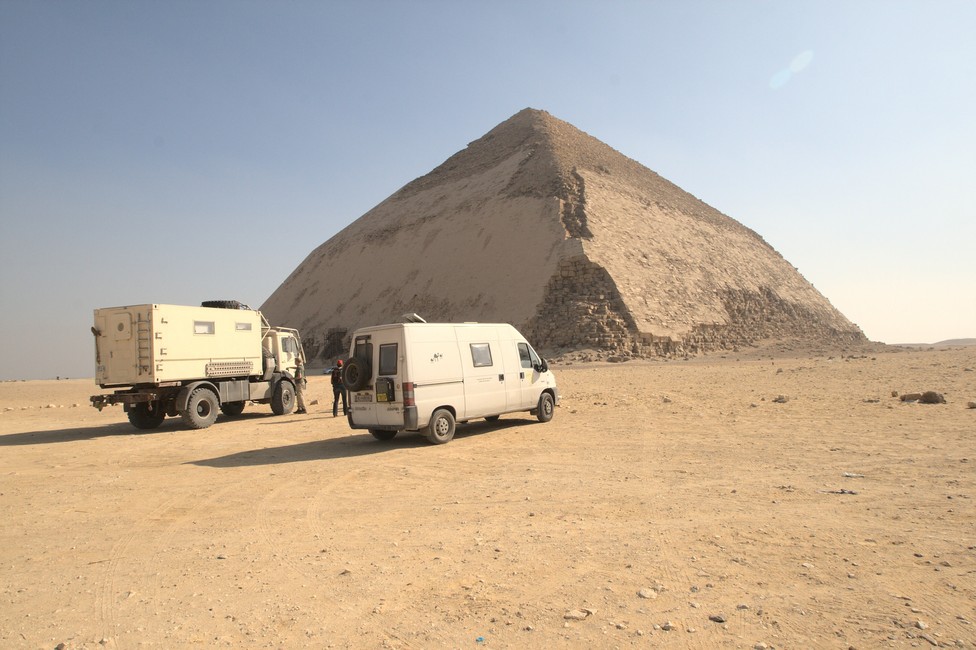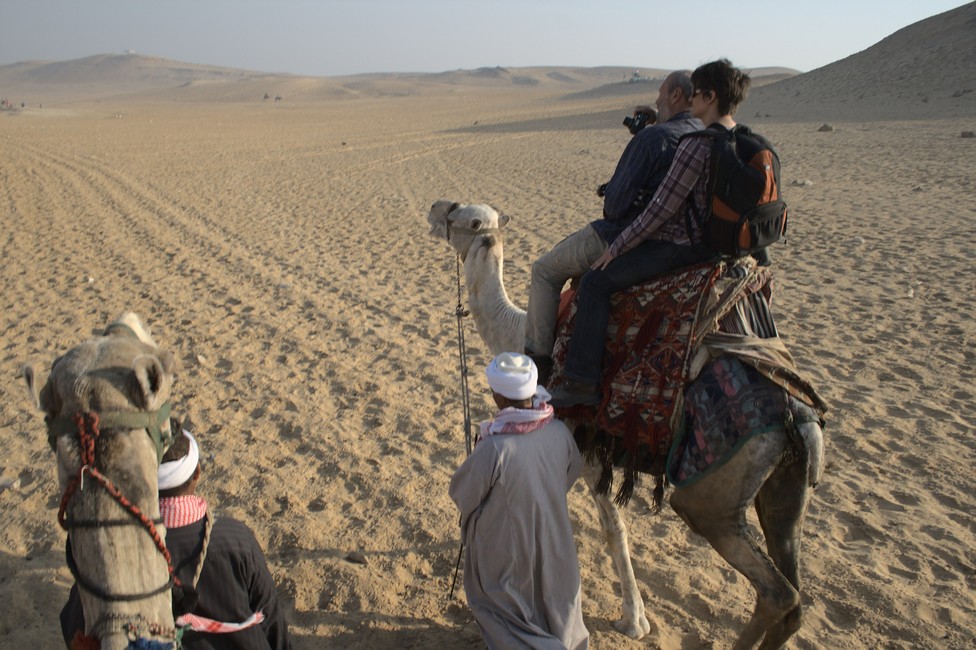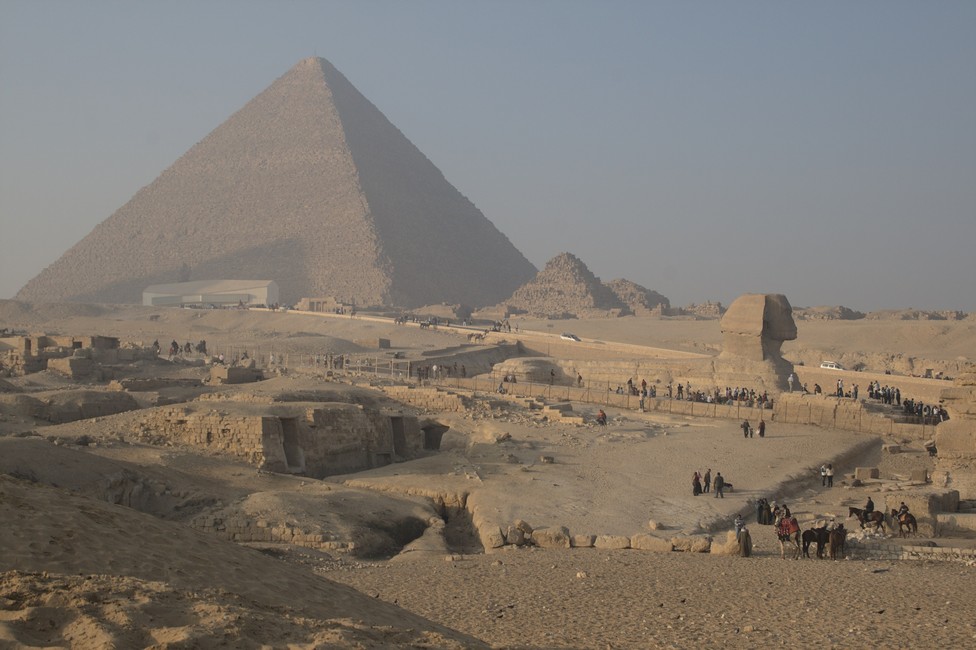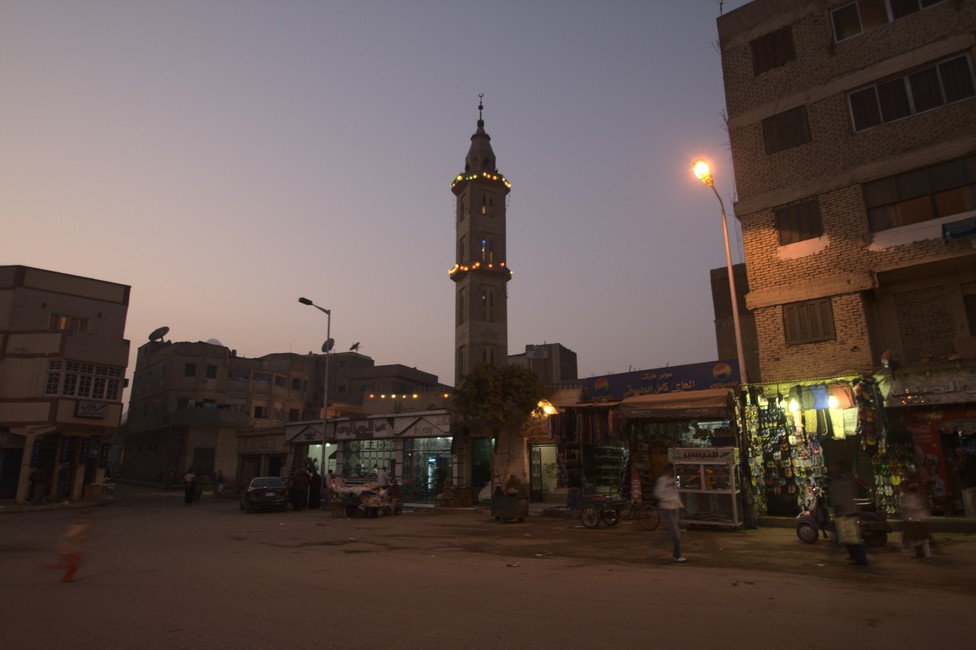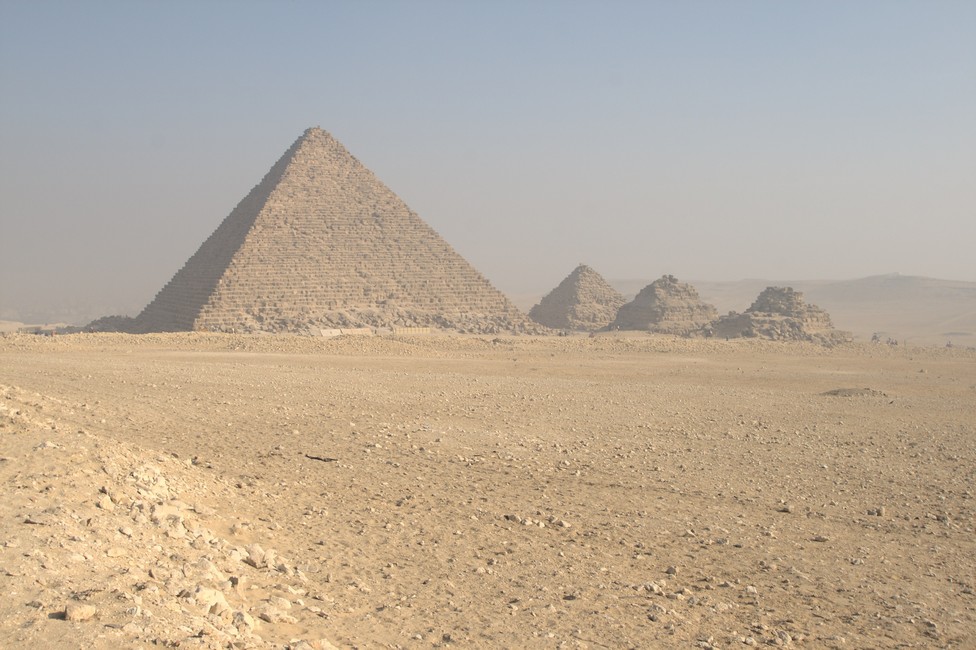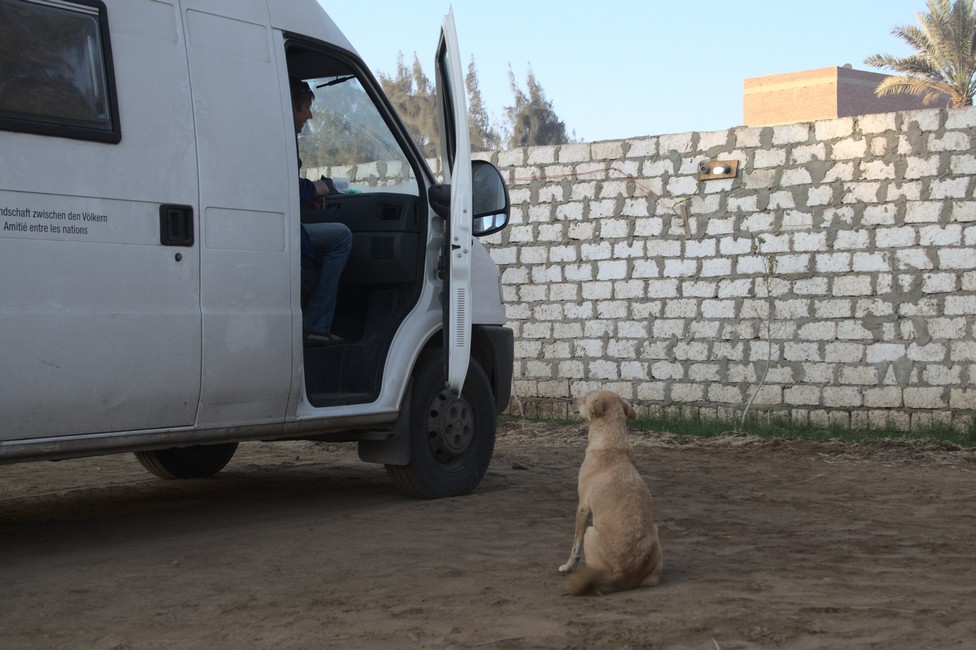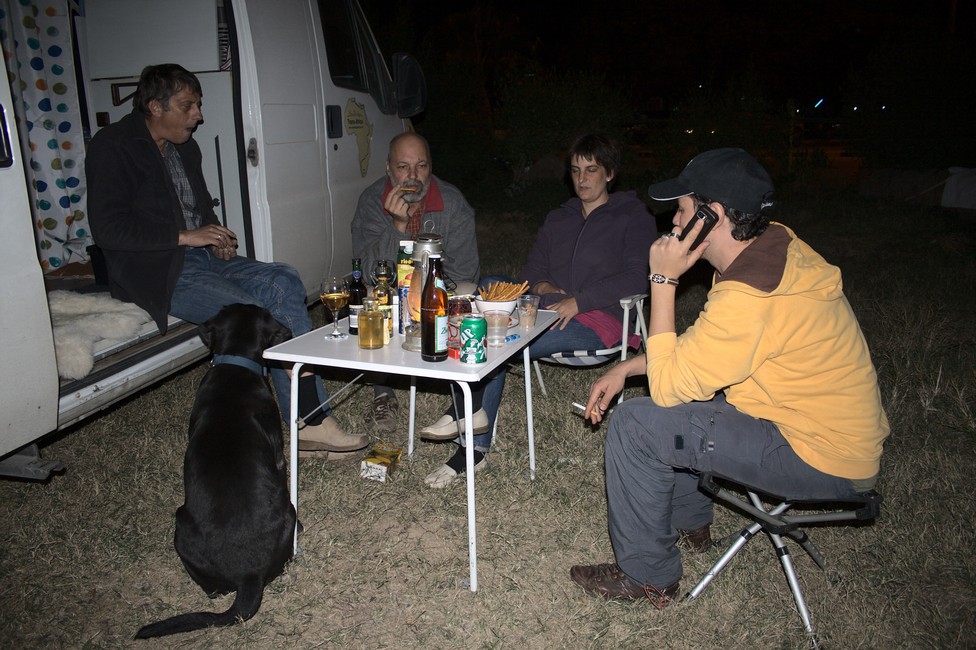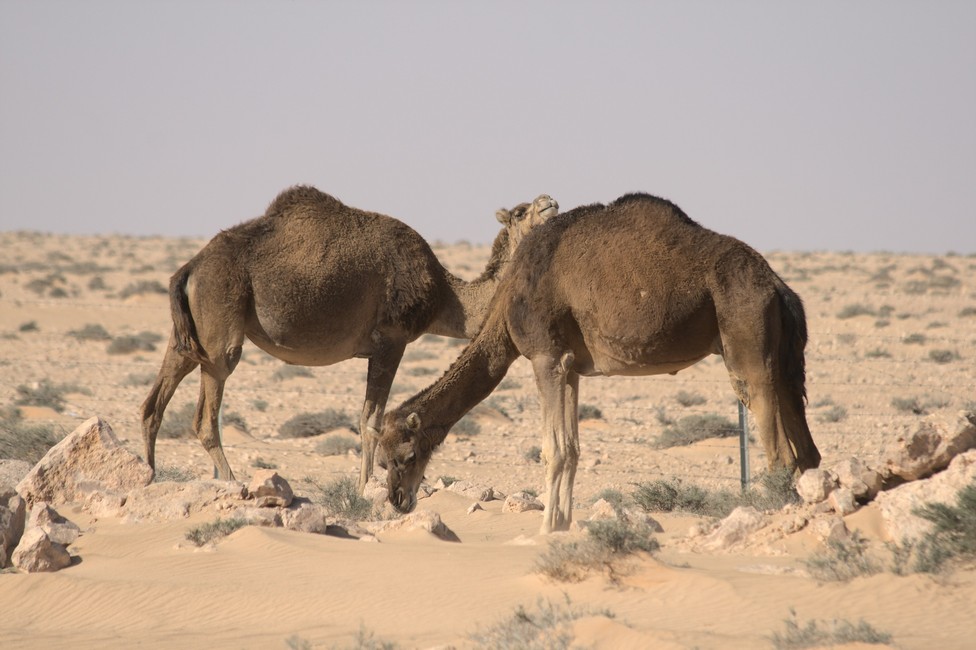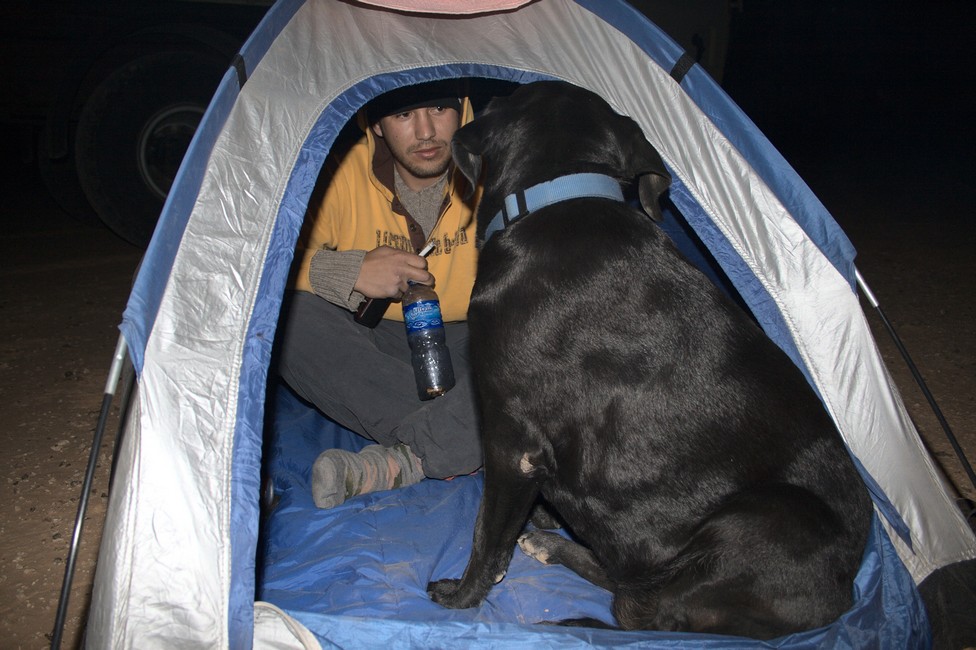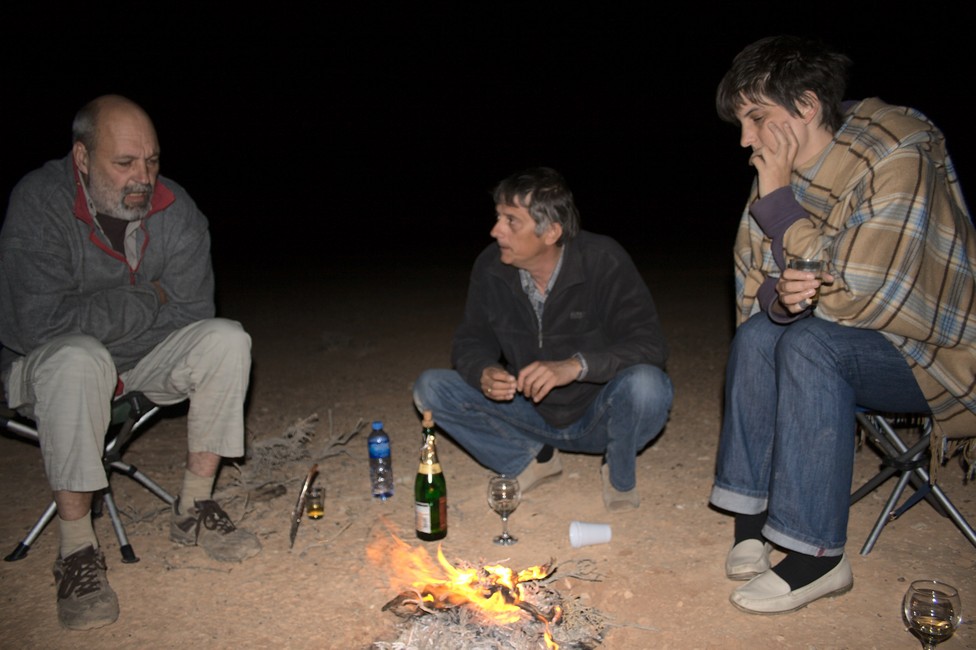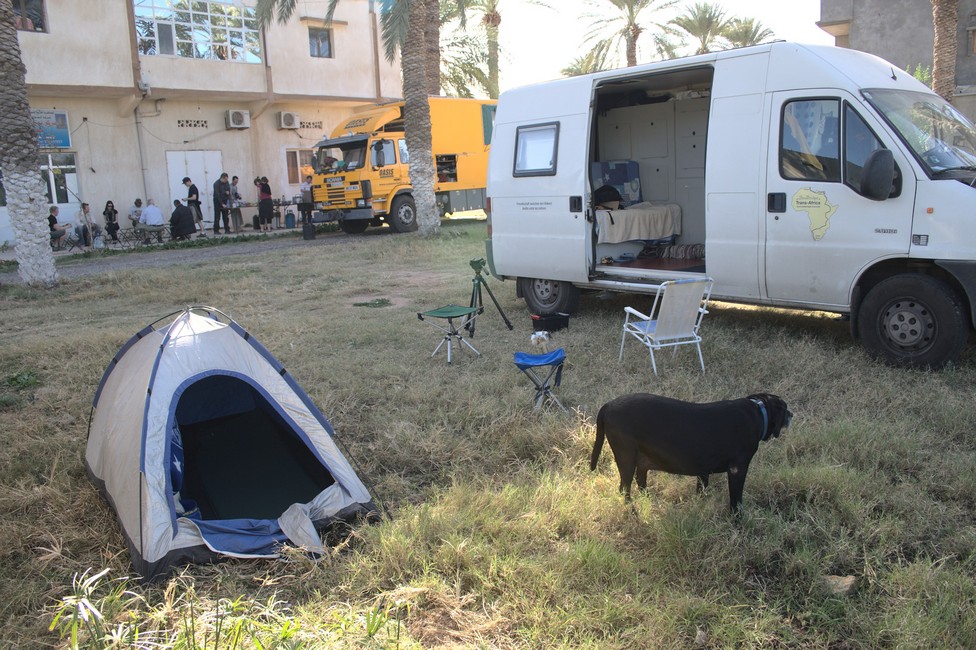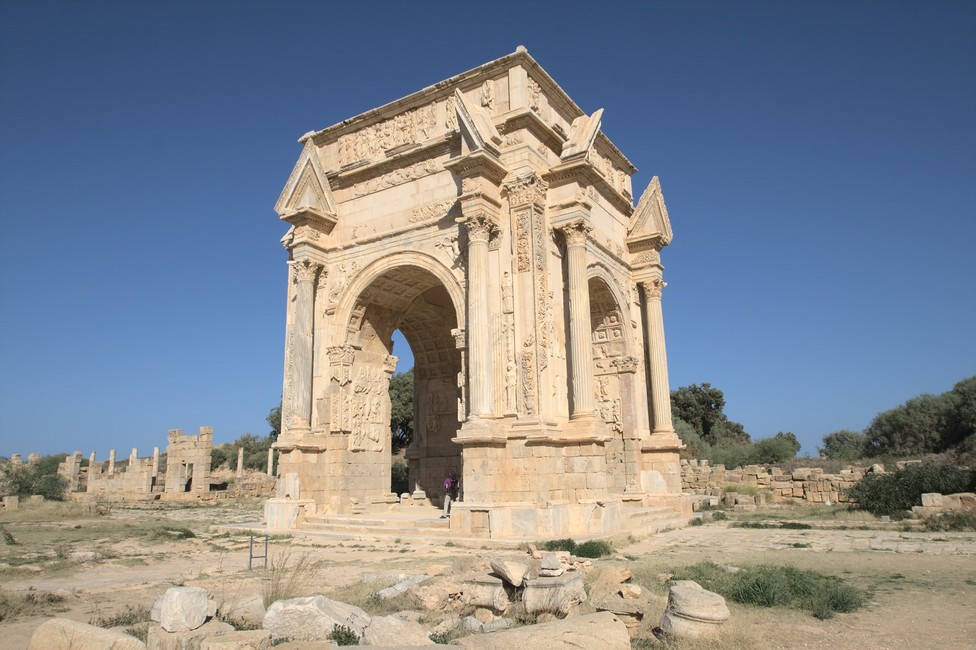In the morning we leave our bush camp early in the morning. I am amazed that our car is not so bad in the sandy terrain and is surprisingly off-road suited, although we do not have four-wheel drive.
Meanwhile, we have already penetrated deep into the desert, we want to go to El Qasr and there visit a ruined city.
For now, we make a stop in a cafe at the roadside . There are no tourists, the locals sit quietly at their coffee and smoke shisha, the waterpipe.
Time has a different dimension here than in the Western world. Stress and work pressure do not exist here. Nature determines the time and human achievements such as technics are all too fleeting in the vastness of Nature.
El Qasr is one of the most fascinating cities in Egypt. It is a late medieval city with many buildings, that are still well preserved. The houses date from the 16th Century, some even go back to the 12th Century.
The city is built from mud bricks, all the more remarkable is that it has not fallen down more over the centuries. It is completely uninhabited, the current inhabitants live in more modern buildings around the old city.
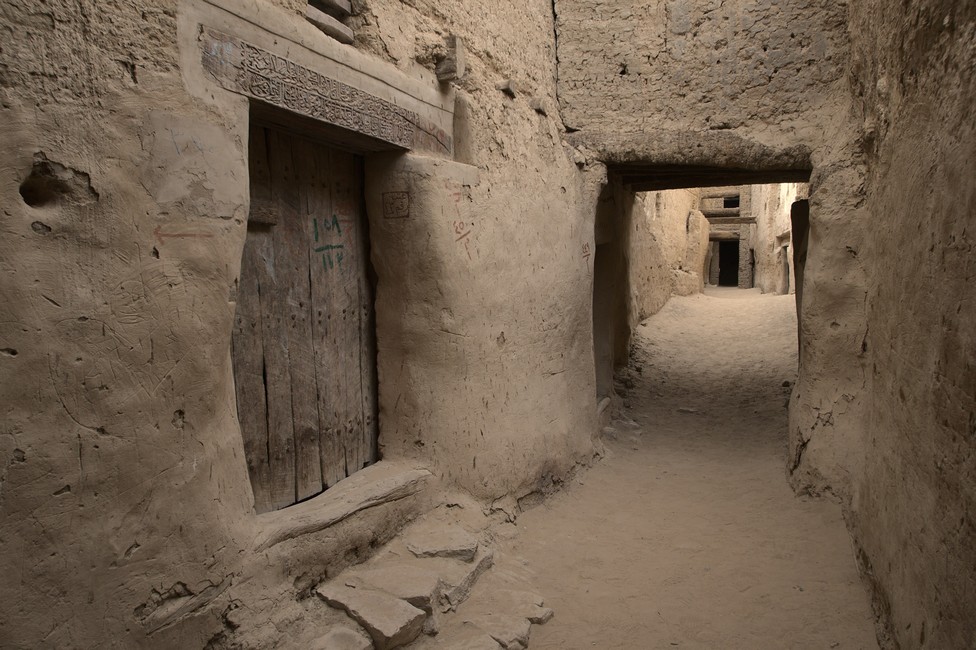
It is also worthwhile to visit the old flour mill, which, although it does not seem so, even today is still functional.
The narrow covered streets remain cool in the hot summer, which we know to appreciate.

Over the entrance doors are wooden door frames, where the year of construction, name of the owner and a verse from the Koran are carved.
Also interesting is the house of Abu Nafir. A pointed arch frames the entrance. The house is bigger than the buildings in the neighborhood. It was built from mud bricks , but also stones from ancient buildings were used.
We leave El Qasr and drive back to the main road. From there we have a beautiful view of the oasis city with its minaret and the old houses.
El Qasr is part of the Dakhla Oasis. The oasis consists of several separate settlements, just as El Qasr, Mut, Balat and Bashendi. The oasis with its palm trees, orchards and fields looks like a beautiful mirage in the desert. Picturesque mud brick villages are surrounded by lush greenery. About 100,000 people live in the oasis. They live on agriculture. Rice, wheat, mangoes, oranges, and of course olives and dates are grown here.
We want to look for a campsite outside the city. After days of Bush camping it is good to have functioning sanitary facilities and electricity supply. Our water resources need to be supplemented. Therefore, the Beduin camp is excellent.
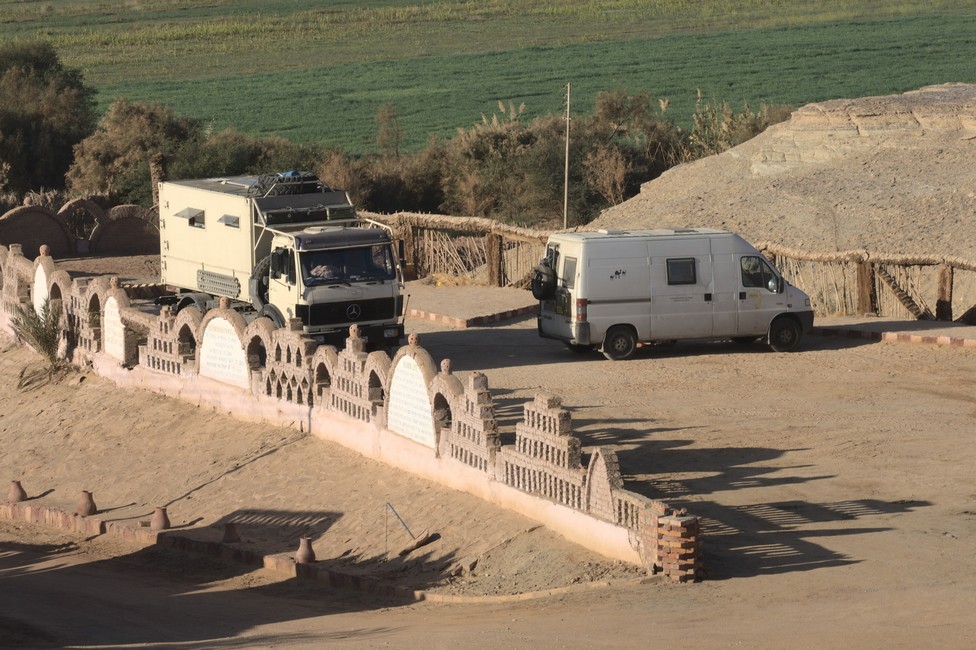
We find refuge on a forecourt of the camp. It is picturesquely situated on a hill, from where you have sweeping views over the oasis and the desert.
In the distance you can see a mosque, built in the lonely landscape. It is more recent and is typical for the area.
Even the Oasen village Mut is clearly visible from here, nestled on the rugged rocky chain of the desert.
From the Bedouin Oasis Village, Camel tours are offered into the desert. The hotel is relatively new and was built in traditional style, with a lot of domes and vaults.
We stay only one night and this morning we drive into town to stock up our food supplies. The farmers are already on their way into the city to offer their goods on the market. Before shopping however we have coffee in the center of the city.
With good Arab Coffee, we discuss our shopping list. We are desperate to eat meat again that had already existed for some time not on our menu. For this we need to find a butcher.
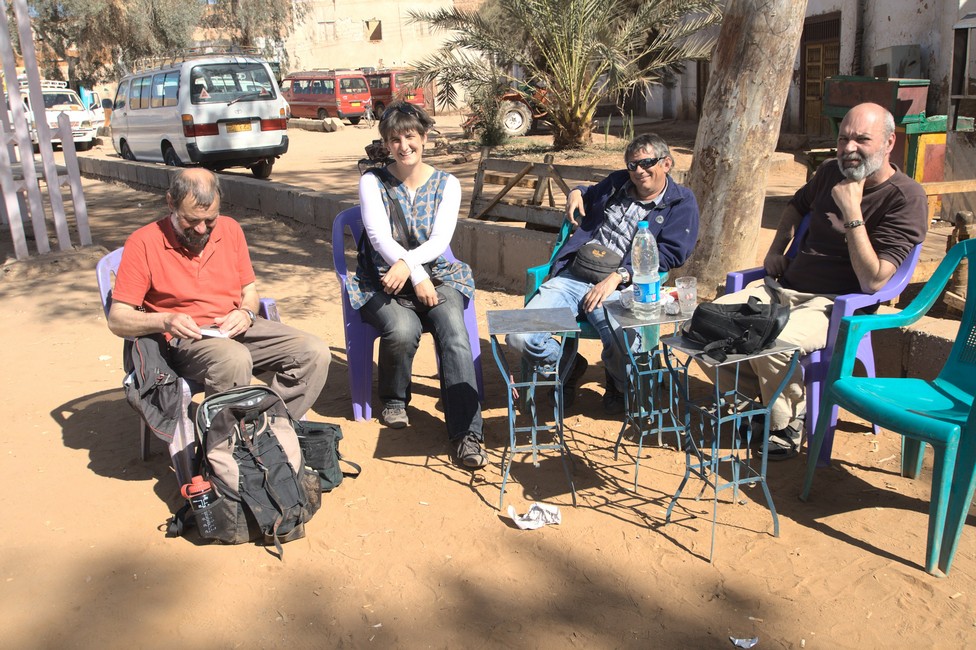
The butcher can not cope with our wish for steaks and pushes the knife into Bine’s hand, she has to cut herself what we need.
Now we are overwhelmed, because where is the steak in a cattle, because unlike in the Western world, there are halfs of beef hanging on a hook from the roof from which the butcher cuts out the meat by weight. The price does not depend on the quality of the piece but on the weight, everything is the same price.
The butcher can not watch our doings anymore and intervenes. From one whole piece, he cuts out pieces for us unusual for him but he wants to help, which look at least like steaks.
All have fun and it is much laughter about the cultural differences that come together here.
With our in the truest sense of the word “fat catch”, we go on. (the meat was fat)
